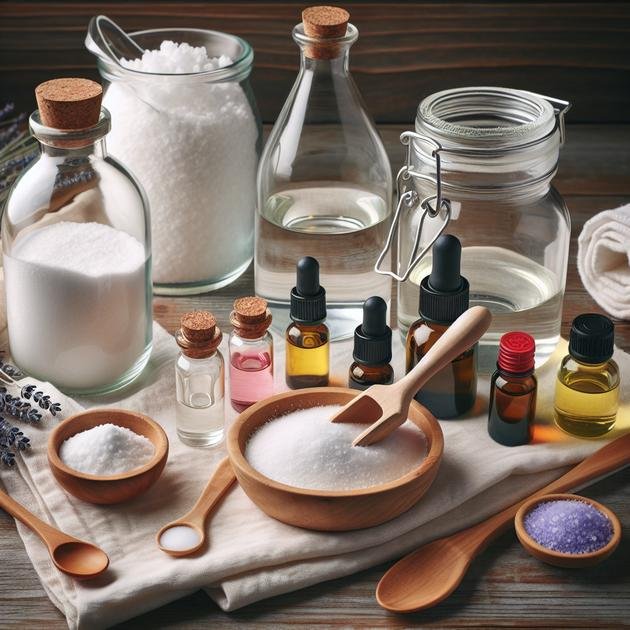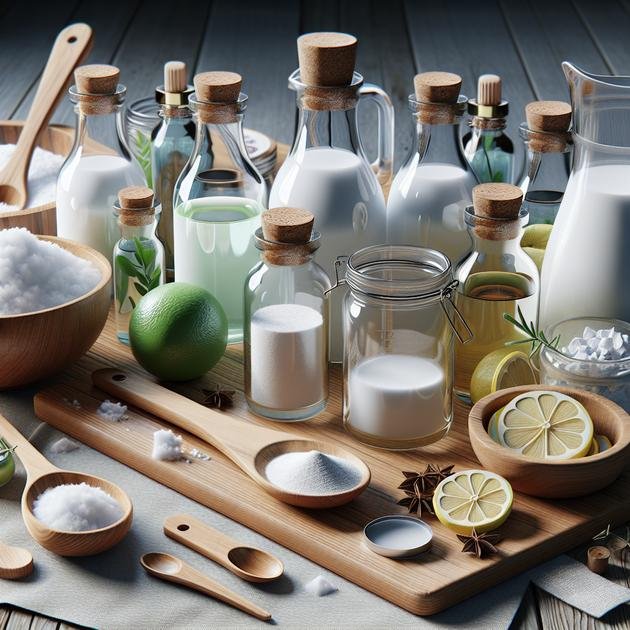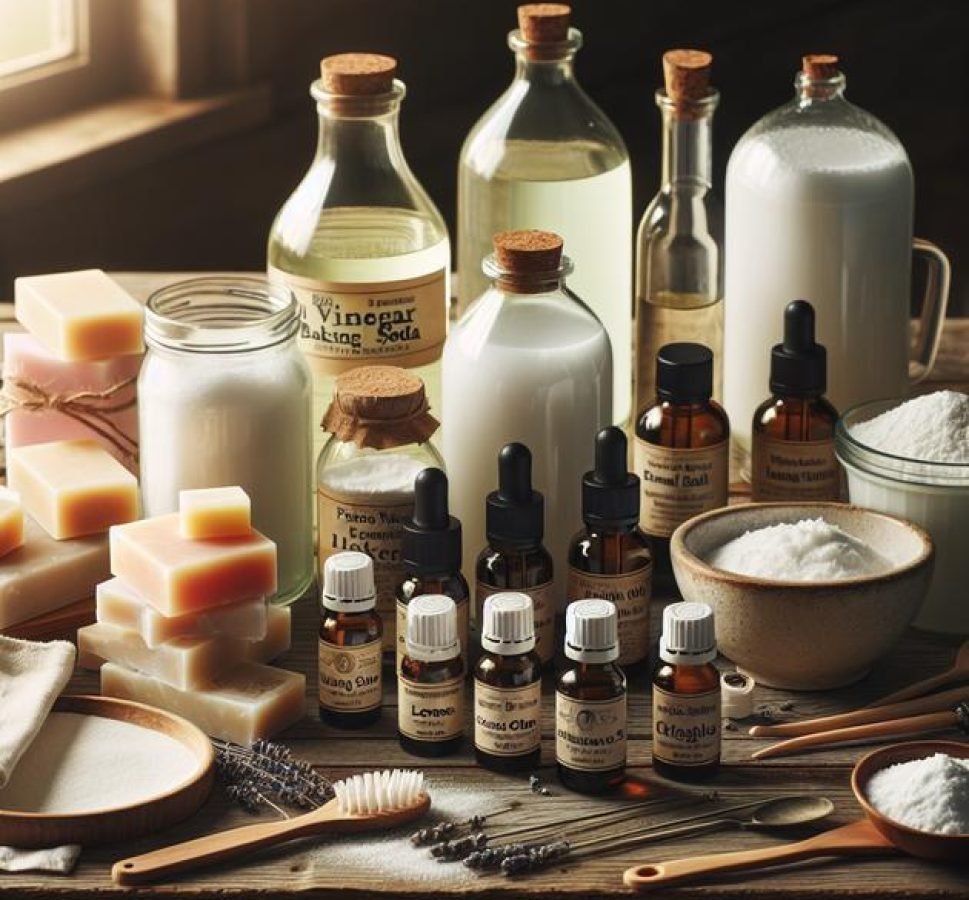A natural fabric softener uses ingredients like vinegar, baking soda, and essential oils to soften clothes safely without harsh chemicals, benefiting sensitive skin and the environment while reducing static and odors effectively.
Using a natural fabric softener can change the way your clothes feel and smell without exposing your skin or home to harsh chemicals. Ever wondered if homemade options really match store products? Let’s dive into recipes and tips that might surprise you.
why choose natural fabric softeners
Choosing a natural fabric softener offers many benefits beyond just softer clothes. Unlike commercial softeners, natural options are free from harsh chemicals like parabens, sulfates, and artificial fragrances that can irritate sensitive skin or trigger allergies. This makes them especially suitable for babies, kids, and those with eczema or asthma.
Natural fabric softeners are also better for the environment. They biodegrade quickly and don’t contribute to water pollution, unlike many commercial products loaded with synthetic chemicals. Using simple ingredients like vinegar, baking soda, or essential oils supports sustainable living and reduces plastic waste when you reuse containers.
Moreover, natural softeners help preserve the lifespan of your clothes. Harsh chemicals can break down fibers over time, causing wear and tear. Gentle natural ingredients keep fabrics fresh and soft without compromising their durability.
Many people also prefer the subtle, customizable scents of herbal or citrus essential oils added to natural fabric softeners, avoiding overpowering synthetic perfume smells common in commercial products.
Health and Environmental Impact
With growing awareness about health and sustainability, natural fabric softeners align well with eco-friendly practices. They support a chemical-free lifestyle and reduce exposure to toxins at home, contributing positively to your well-being and the planet.
Overall, choosing a natural fabric softener is an easy step toward a cleaner, greener laundry routine that benefits you and your family in tangible ways.
key ingredients for effective natural softening
When making an effective natural fabric softener, choosing the right ingredients is crucial. Common, simple items work well to soften fabrics gently and safely.
White Vinegar
This natural acid is excellent for breaking down detergent residues in clothing. It helps fabrics feel softer and reduces static cling. Use 1/2 to 1 cup of white vinegar in the rinse cycle as a natural softening agent.
Baking Soda
Baking soda balances pH levels in the wash water, enhancing cleaning and softening. It also neutralizes odors in clothing. Add 1/2 cup of baking soda to your laundry to help fabrics come out soft and fresh.
Essential Oils
For a pleasant and natural scent, adding a few drops of essential oils like lavender, eucalyptus, or lemon can make your laundry smell fresh without synthetic fragrances. They can also have antibacterial properties.
Liquid Castile Soap
While not a softener by itself, liquid castile soap can be used as a gentle detergent base combined with softening agents. It’s biodegradable and safe for sensitive skin.
Water
Using clean, soft water improves the effectiveness of your natural softener by allowing ingredients to work better on your fabrics.
Mixing these ingredients in the right proportions creates a powerful, chemical-free fabric softener that helps clothes stay soft, fresh, and comfortable.
step-by-step guide to making your own fabric softener

Making your own natural fabric softener at home is easy and cost-effective. Follow these simple steps to create a softening solution that works:
Step 1: Gather Ingredients
Collect the key ingredients: 1 cup of white vinegar, 1/2 cup of baking soda, and 10-15 drops of your favorite essential oil for scent.
Step 2: Mix Baking Soda and Vinegar
In a large bowl, slowly pour the baking soda into the vinegar. The mixture will fizz as the two react. Stir gently until the fizzing subsides.
Step 3: Add Essential Oils
Once the fizzing stops, add your chosen essential oils. This step adds a natural fragrance without synthetic chemicals.
Step 4: Store the Softener
Transfer the mixture into a clean bottle or jar with a tight lid. Shake before each use to mix the ingredients well.
Step 5: Use in Laundry
Add 1/4 to 1/2 cup of this homemade softener to the rinse cycle of your washing machine. It will help soften fabrics and reduce static.
Step 6: Adjust Recipe as Needed
If fabrics feel stiff, try increasing the vinegar slightly. For stronger scent, add a few more drops of essential oils. Customize according to your preferences.
Creating your homemade fabric softener is a straightforward process that uses simple, eco-friendly ingredients to give your laundry a fresh, soft feel without harsh chemicals.
how to test and adjust your homemade softener
Testing and adjusting your homemade natural fabric softener ensures it works well for your laundry needs. Start by using a small amount, about 1/4 cup, in the rinse cycle and observe how your clothes feel after drying.
Check Fabric Softness
After washing, feel your clothes to evaluate softness. If they feel rough or stiff, try increasing the vinegar slightly, as it helps break down detergent residues and softens fabrics.
Assess Scent Strength
If you want a stronger fragrance, add a few more drops of essential oils next time you make the softener. Be careful not to add too much as it may irritate sensitive skin.
Observe Static Reduction
Evaluate if your clothes have less static cling. If static remains a problem, increase the amount of baking soda or try adding a small amount of cornstarch as a natural anti-static agent.
Adjust Based on Water Type
Hard water can reduce the effectiveness of natural softeners. If you have hard water, consider using more vinegar or adding a water softener specifically designed for laundry.
Test on Different Fabrics
Some fabrics respond differently to natural softeners. Test your recipe on cotton, synthetics, and delicate items separately to ensure it suits all your laundry.
Keep notes on each test batch to remember the proportions that work best. Making small adjustments over time will help you create the perfect homemade softener for your laundry routine.
benefits for sensitive skin and allergies
Using a natural fabric softener can be especially advantageous for people with sensitive skin or allergies. Commercial fabric softeners often contain synthetic fragrances, dyes, and chemicals that may irritate the skin or cause allergic reactions.
Gentle on Sensitive Skin
Natural fabric softeners use mild ingredients like vinegar, baking soda, and essential oils, which are less likely to trigger irritation or rashes. This makes them ideal for babies, children, and adults with delicate skin.
Free from Harsh Chemicals
Many store-bought softeners include parabens, phthalates, and other additives that can cause respiratory issues or worsen allergies. In contrast, homemade natural softeners avoid these harmful substances.
Reduces Allergy Symptoms
Natural fabric softeners minimize exposure to allergens often found in synthetic products, such as artificial fragrances. They help prevent sneezing, itching, and irritation caused by these allergens.
Safe for Asthma and Eczema
People with asthma or eczema benefit from using natural softeners because these products do not release volatile organic compounds (VOCs) that can trigger symptoms or flare-ups.
Eco-Friendly and Skin-Friendly
Natural softeners are biodegradable and free from toxins, making them safer for your skin and the environment.
Switching to natural fabric softeners is a simple way to protect your skin while ensuring your clothes stay soft and fresh without unwanted chemicals.
environmental impact of commercial vs natural softeners

Commercial fabric softeners often contain synthetic chemicals that can harm the environment. Many of these chemicals do not break down easily and end up polluting rivers and lakes, affecting aquatic life.
Chemical Pollution
Ingredients such as phthalates, parabens, and artificial fragrances in commercial softeners contribute to water pollution. These substances can be toxic to fish and other wildlife, disrupting ecosystems.
Plastic Waste and Packaging
Commercial softeners typically come in plastic bottles, which contribute to plastic waste. Often, these containers are not recycled properly, leading to landfill buildup and ocean pollution.
Energy and Resource Use
Producing commercial softeners involves energy-intensive manufacturing and transportation, increasing the carbon footprint associated with these products.
Benefits of Natural Fabric Softeners
Natural softeners use biodegradable ingredients like vinegar and baking soda, which break down quickly and don’t harm the environment. They also usually come in reusable or recyclable containers, reducing plastic waste.
Reducing Your Environmental Footprint
Using homemade natural fabric softeners helps lower chemical pollution and waste. It’s a simple way to support sustainable living and protect water sources for future generations.
Choosing natural solutions supports a cleaner, greener planet while keeping your laundry fresh and soft.
creative uses beyond laundry
Natural fabric softeners can be used in many creative ways beyond just softening laundry. Their gentle and eco-friendly ingredients make them versatile for household use.
Freshening Upholstery and Curtains
Spray diluted natural fabric softener onto upholstery or curtains to eliminate odors and keep fabrics soft. This is a safe and simple way to refresh your home textiles without harsh chemicals.
Making DIY Linen Spray
Mix fabric softener with water in a spray bottle to create a linen spray for bedding. It adds a light, fresh scent and softens the fabric, promoting a comfortable and soothing sleep environment.
Softening Towels and Bath Mats
Use natural fabric softener in the rinse cycle when washing towels and bath mats to keep them fluffy and absorbent without residue buildup from commercial products.
Decreasing Static on Clothes
Spray diluted fabric softener on clothes to reduce static cling between wears. This is especially helpful in dry winter months when static is more common.
Pet Bedding Care
Softening pet beds with natural softeners can help keep them comfortable and fresh. Ensure the ingredients are safe for pets and avoid overuse.
Cleaning and Softening Brushes
Soak hairbrushes or pet brushes in a mild solution of natural fabric softener and water to remove residue and keep bristles soft.
Experimenting with these creative uses can help you get the most from your natural fabric softener while supporting a chemical-free home environment.
troubleshooting common issues with natural softeners
Even the best homemade natural fabric softeners can sometimes face issues. Understanding common problems and how to fix them helps keep your laundry soft and fresh.
Issue: Clothes Still Feel Stiff
This can happen if the softener concentration is too low or residues are left from detergent. Try increasing the amount of vinegar slightly or ensure you use the right detergent quantity.
Issue: Lingering Odor
If your clothes smell musty or sour, it could be due to vinegar residue or infrequent washing. Add a few drops of essential oils to mask odors, and make sure your washing machine is clean and aired out.
Issue: Residue or Spots on Clothes
Too much baking soda or undissolved ingredients might leave spots. Dissolve baking soda fully in warm water before adding, or reduce the quantity used.
Issue: Softener Not Effective on Static
If static cling remains, try adding a small amount of natural anti-static agents like cornstarch or reduce overdrying clothes. Also, consider fabric types as synthetics hold more static.
Issue: Washing Machine Issues
Some homemade solutions can cause buildup in machines over time. Regularly run a cleaning cycle with vinegar or a machine cleaner to prevent this.
Testing small batches or adjusting ingredient amounts can help resolve most problems and optimize your natural softener for best results.
Wrapping Up Natural Fabric Softeners
Using a natural fabric softener is a great way to keep your clothes soft and fresh while avoiding harsh chemicals. By making your own softener, you control the ingredients and customize the scent to your liking.
Natural options are gentle on sensitive skin and better for the environment. Plus, they can be used in creative ways around your home beyond laundry. While sometimes adjustments are needed, testing and tweaking recipes ensures the best results.
Embracing natural fabric softeners supports a cleaner, safer home and helps reduce your environmental impact. Give it a try and enjoy softer clothes with peace of mind.





